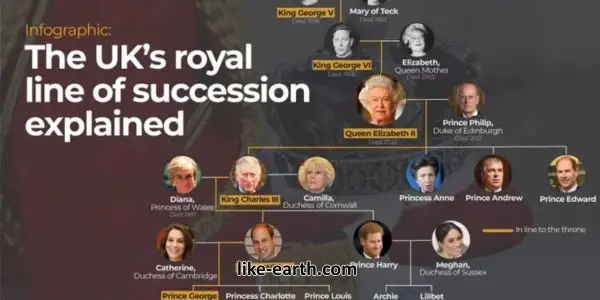Royal Line of Succession: How It’s Determined

Royal Line of Succession: How It’s Determined – Understanding the order of royal heirs is essential to grasp how the British monarchy operates. The line of succession in the British royal family is not random—it’s meticulously structured based on centuries-old rules and updated legal reforms. In this article, we dive into the fascinating order of succession and how it’s determined.
The British Line of Succession Explained
The line of succession refers to the sequential order of individuals entitled to assume the British throne. Traditionally, it followed male-preference primogeniture, but modern changes have led to gender-neutral laws.
Key Rules Determining Royal Succession
The line is governed by legal statutes including:
- Bill of Rights 1689
- Act of Settlement 1701
- Succession to the Crown Act 2013
These laws stipulate that only Protestant descendants of Princess Sophia of Hanover are eligible. The 2013 reform removed male bias, allowing the eldest child to inherit the throne regardless of gender.
Current Royal Succession Line (as of 2025)
- Prince William, Prince of Wales
- Prince George of Wales
- Princess Charlotte of Wales
- Prince Louis of Wales
- Prince Harry, Duke of Sussex
- Master Archie Mountbatten-Windsor
- Miss Lilibet Mountbatten-Windsor
- Prince Andrew, Duke of York
- Princess Beatrice of York
- Sienna Mapelli Mozzi
Impact of the 2013 Succession Reform
Before 2013, sons took precedence over daughters. Princess Charlotte would have been bypassed by Prince Louis under the old rule. The new law reflects a shift toward equality within the royal system.
Factors That Can Disqualify an Heir
- Conversion to Catholicism (though this was amended in 2013)
- Unapproved royal marriages before 2013
- Abdication or removal by Parliament
Even with these limitations, most changes must pass through both royal and governmental approval.
The Importance of Clear Royal Succession
A clear succession line prevents constitutional crises. In past centuries, rival claims led to wars. Today, clarity promotes national stability.
Royal Babies and Their Future Roles
Children born into royalty automatically join the succession line. Their positions shift only when new royal births or deaths occur. For example, Prince George is third in line, and his eventual children will follow him.
Will the Monarchy Remain in Place?
Debate continues about monarchy’s future. Yet the well-maintained succession structure shows its relevance in modern governance. Monarchs now serve as national symbols rather than power holders.
Conclusion: An Institution Rooted in Structure
The British monarchy’s strength lies in its stability and adaptability. With the updated succession rules, it reflects both tradition and progress. As interest in royal affairs continues, knowing how the line of heirs is shaped adds depth to public understanding.
Learn more about the world and its evolving societies by visiting our main page.
Follow the latest royal news on our official WhatsApp channel. Royal Line of Succession: How It’s Determined



